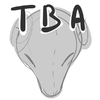|
|
| Line 293: |
Line 293: |
| | !colspan="3"|Common Noses | | !colspan="3"|Common Noses |
| | |- | | |- |
| − | |[[File:Pillowing-head-tba.png|100px]] | + | |[[File:Standard_nose.png|100px]] |
| | |style="text-align:center" |Standard | | |style="text-align:center" |Standard |
| − | |(Info Here) | + | |Your standard Lintling nose! Very wiggly and expressive. |
| | |- | | |- |
| − | |[[File:Pillowing-head-tba.png|100px]] | + | |[[File:Bunny_nose.png|100px]] |
| | |style="text-align:center" |Bunny | | |style="text-align:center" |Bunny |
| − | |(Info Here) | + | |A cute littly bunny nose, quite sensitive. |
| | |- | | |- |
| | !colspan="3"|Uncommon Noses | | !colspan="3"|Uncommon Noses |
| | |- | | |- |
| − | |[[File:Pillowing-head-tba.png|100px]] | + | |[[File:Sharp_nose.png|100px]] |
| | |style="text-align:center" |Sharp | | |style="text-align:center" |Sharp |
| − | |(Info Here) | + | |A more feline-looking nose. |
| | |- | | |- |
| − | |[[File:Pillowing-head-tba.png|100px]] | + | |[[File:Round_nose.png|100px]] |
| | |style="text-align:center" |Round | | |style="text-align:center" |Round |
| − | |(Info Here) | + | |For that puppylike look! |
| | |- | | |- |
| | !colspan="3"|Rare Noses | | !colspan="3"|Rare Noses |
| | |- | | |- |
| − | |[[File:Pillowing-head-tba.png|100px]] | + | |[[File:Arrow_nose.png|100px]] |
| | |style="text-align:center" |Arrow | | |style="text-align:center" |Arrow |
| − | |(Info Here) | + | |For those who enjoy a batty look. |
| | |- | | |- |
| − | |[[File:Pillowing-head-tba.png|100px]] | + | |[[File:Hog_nose.png|100px]] |
| | |style="text-align:center" |Hog | | |style="text-align:center" |Hog |
| − | |(Info Here) | + | |A cute little oinky snout. |
| | |- | | |- |
| | !colspan="3"|Very Rare Noses | | !colspan="3"|Very Rare Noses |
| | |- | | |- |
| − | |[[File:Pillowing-head-tba.png|100px]] | + | |[[File:Tracker_nose.png|100px]] |
| | |style="text-align:center" |Tracker | | |style="text-align:center" |Tracker |
| − | |(Info Here) | + | |Super sensitive, great for Lintlings with less-than-stellar vision. |
| | |- | | |- |
| − | |[[File:Pillowing-head-tba.png|100px]] | + | |[[File:Long_nose.png|100px]] |
| | |style="text-align:center" |Long Nose | | |style="text-align:center" |Long Nose |
| − | |(Info Here) | + | |A long nose for an exploratory snout. |
| | |} | | |} |
| | | | |
Much like Pillowings, Lintlings have tiers of rarity. Whether this is because certain features require more life force to make, or some other reason, no one is sure yet. However, they follow a very similar system to their Pillowing counterparts!
This just means that only certain generations can get access to certain features. The list below is a helpful quick list to make sure you're following the rules of your Lintling. Like for example, Generation 1 lintlings have access to ALL features including Special ones. Whereas Generation 4 lintlings are only allowed to use Common and 1 Uncommon feature because they're made with smaller amounts of magic.
| Image
|
Ear Type
|
Description
|
| Common Ears
|

|
Short/Standard
|
All average Lintlings have a short twist of an ear, it's the most common one you'll see in everyday colonies.
|

|
Low/Droop Short
|
Like the short upright ears, these hold the same smaller amounts of fluff, instead the shell is naturally twisted down to the sides letting the fluff fall low.
|
| Uncommon Ears
|

|
Medium
|
Some Lintlings have a wider and longer ear twist that holds the fluff up to more a point. It helps them look alert and signal other lintlings with a simple twitch of their ears.
|

|
Low/Droop Medium
|
The low set medium ears function much the same to the low shorts, only real difference being is that they can hold more fluff.
|

|
Tube
|
(Info Here)
|
| Rare Ears
|

|
Large
|
Like the medium ear twists, the large ones stand up very tall keeping the fluff usually pretty erect. Usually they can hold a lot more fluff than the medium or short ears could which make them more sensitive to changes in the air or far away sounds. Lintlings with these ears are usually look outs while they gather supplies in dangerous territory.
|

|
Low Large
|
Hanging down low, the twist is still held up and open to hear very well. The fluff usually drapes down the sides of the head. Much like the upright large ears, these also serve a sensitive purpose. They can not feel the air nearly as well as upright ears, but they are much more susceptible to vibrations coming up from the ground as other creatures approach. It's said they can even sense the lightest pillowing coming just by it's soft foot steps.
|

|
Puppy
|
The longer drooped ears are more rare and said to give lintlings a puppy-like demeanor. It's even said that hosts seem to take more pity upon Lintlings with this type of ear due to the cute factor.
|

|
Kitty
|
(Info Here)
|

|
Bunny
|
(Info Here)
|
| Image
|
Ear Fluff Type
|
Description
|
| Common Ear Fluff
|

|
Short/Standard Length
|
These are the most commonly seen fluffs for most Lintlings. They don't make for the best at sensing threats around them, but they can easily pick up on Lintling chatter and signals. Can be any of the following Common fluff types.
|

|
Feathered
|
Soft and thinner, the feathered fluff type ears normally are draped much like the fur on a papillon dog.
|

|
Cotton
|
These are thicker, curlier, and woolier than the other fluff types. It has a much easier time sitting up without losing it's shape.
|

|
Static
|
It looks like the lintling with these fluffs got shocked by a bolt of electricity! Maybe a bad meeting with an outlet or electrical cord? These fluffs have no trouble staying upright, but can be rather unruly.
|

|
Smooth
|
Soft and even silky to the touch. These ears look firm and solid much like a normal animal's. They seem to hold sculpted shapes very well and look shiny while doing it.
|

|
Fuzz
|
Similar to the Feathering fluff, this fluff instead just holds it's poof straight out like a pussy willow or cat tail plant. It doesn't like to hold shapes.
|

|
Tangled
|
This mass of random fluff seems to always be a strange mess. It can never be tamed and seems to never go in the direction you want it too. It really has a mind of it's own.
|

|
Furry
|
(Info Here)
|
| Uncommon Ear Fluff
|

|
Buzzed
|
A lintling must always have fluff in their ears, without it they would not be able to hear or sense things around them. Even with the most basic shortest fluff aids them in hearing the squeaks and chirps of their fellow lints!
|

|
Medium
|
Lintlings with these ears are slightly less common, but still around enough. They have a better time sensing danger in the air than their short and buzzed lintling friends so they try to look out for the groups best they can.
|
| Rare Ear Fluff
|

|
Large
|
These are rare to see on lintlings but when they are found they are usually the quickest of the lintling bunch. They can sense danger from the tips of their fluff and send out the signal to move it! They don't ever seem to be caught off guard.
|
| Very Rare Ear Fluff
|

|
Extra Long
|
You would think more fluff the better, better for hearing and sensing? Not always! If the fluff can't stop upright into the air and flops over onto it'self it actually muffles the noises with it. These longer fluffs are very rare and don't serve much use other than to be decorational.
|
| Special Ear Fluff
|

|
Multicolored Fluff
|
(Info Here)
|

|
Shaped Fluff
|
(Info Here)
|

|
Yarn Fluff
|
(Info Here)
|

|
Glowing Fluff
|
(Info Here)
|
| Image
|
Eye Type
|
Description
|
| Common Eyes
|

|
Round (Standard)
|
This is the most common pupil shape you will see on any Lintling.
|

|
Full (Wild)
|
Just as common as the Round eye shapes, instead of there being any sclera (whites) showing, the iris takes up the entire eye. These Lintlings are said to have better sight than others.
|
| Uncommon Eyes
|

|
Slit
|
This is a little more uncommon, but it's not unheard of to see Lintlings around who have cat-like slitted pupils.
|

|
Glass
|
These marble like eyes are just similar to the Round iris/pupil normally seen, the only difference being is the lack of pupil in this shape.
|

|
Beads
|
Not seen as often as Round or Full, some Lintlings have cute little beads instead, giving them a simpler, cuter look.
|

|
Buttons
|
Like beads, buttons are less common, but can also give Lintlings a cute, simple face!
|

|
Stitching
|
A little less common, but some Lintlings can really only manage some stitches for their offsprings' eyes. Effect on vision currently unknown.
|
| Rare Eyes
|

|
Dark
|
These are very rare and hardly seen in the Lintling communities. They seem to make other Lintlings uncomfortable around the owner who has them and are subtly pushed away from the colony if they can afford too. These Lintlings can see much better in the dark than any others thanks to their dark eyes.
|
| Very Rare Eyes
|

|
Sparkle
|
This is an extremely rare feature is normally only see on 2nd gen lintlings. They seem to have magic emitting from their eyes that cause them to shimmer and sparkle even when there is no light to reflect them.
|

|
Bejewled
|
(Info Here)
|

|
Shaped Pupils
|
(Info Here)
|
| Image
|
Teeth Set
|
Description
|
| Common Teeth
|

|
Top Small
|
This set of of prominent teeth is most commonly found on most lintlings. The larger teeth are set at the top giving a sweet little buck toothed smile.
|

|
Top Small
|
This set of of prominent teeth is most commonly found on most lintlings. This gives a rather goofy yet loving smile.
|

|
Set Small
|
This set of of prominent teeth is most commonly found on most lintlings. This tends to be one of the more handy sets of teeth as it can nip and snip quickly using both prominent top and bottom teeth.
|
| Uncommon Teeth
|

|
Top Medium
|
Larger teeth set at the top of the mouth, these are usually used for easily cutting through things like fabrics, string, and many other items.
|

|
Bottom Medium
|
Larger set of of teeth at the bottom of their mouth makes for great carving. Lintings will these teeth are best for gnawing and carving through wood like surfaces.
|
| Rare Teeth
|

|
Top Large
|
Not seen very often in Lintlings since they are very active chewers and keep their teeth filed down pretty regularly.
|

|
Bottom Large
|
This set of large teeth are likely never seen since Lintlings tend to keep their teeth neat and filed. Long bottom teeth can be quite a hassle for them and even get in the way of their eating!
|

|
Set Top
|
Much like the Top medium this set of teeth is a great slicer. These teeth are great for slicing through thinner more sheer like fabrics and paper. It can make the cleanest of cuts.
|

|
Set Bottom
|
A lot like the Bottom medium teeth, these are great for wood whittling work. Because of the aid of the upper teeth it can make even more precise and sharp details in their creative work.
|







